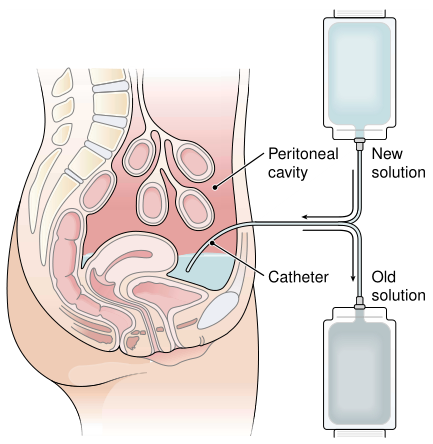- 签证留学 |
- 笔译 |
- 口译
- 求职 |
- 日/韩语 |
- 德语
Injury, shock, exposure to toxins, infections, and other renal disorders may cause damage to the nephrons, resulting in acute renal failure (ARF). There is rapid loss of kidney function with oliguria and accumulation of nitrogenous wastes in the blood. Failure of the kidneys to eliminate potassium leads to hyperkalemia, along with other electrolyte imbalances and acidosis. When destruction (necrosis) of kidney tubules is involved, the condition may be referred to as acute tubular necrosis (ATN).
Renal failure may lead to a need for kidney dialysis or, ultimately, renal transplantation. Dialysis refers to the movement of substances across a semipermeable membrane; it is a method used for removing harmful or unnecessary substances from the body when the kidneys are impaired or have been removed. In hemodialysis, blood is cleansed by passage over a membrane surrounded by fluid (dialysate) that draws out unwanted substances. In peritoneal dialysis, fluid is introduced into the peritoneal cavity. The fluid is periodically withdrawn along with waste products and replaced (Fig. 1). The exchange may be done at intervals throughout the day in continuous ambulatory peritoneal dialysis (CAPD) or during the night in continuous cyclic peritoneal dialysis (CCPD).

FIGURE 1. Peritoneal dialysis. A semipermeable membrane richly supplied with small blood vessels lines the peritoneal cavity. With dialysate dwelling in the peritoneal cavity, waste products diffuse from the network of blood vessels into the dialysate.
责任编辑:admin
